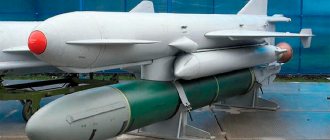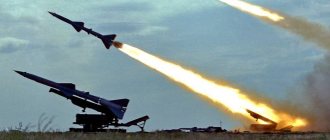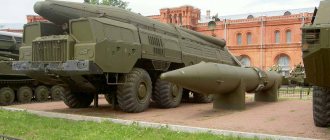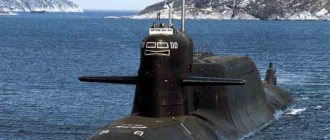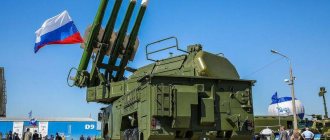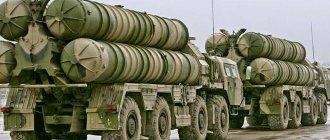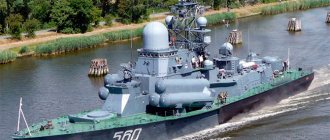Starship orbiter on Mars
weekend article
Nowadays there is a lot of talk about reusable space rockets, but the main thing is often overlooked - that such rockets are still being created. Because the word "multiple" implies "many times" and not "several times" as is currently achieved. At present, we can only talk about the return of individual rocket blocks for their reuse, as in the American Falcon 9 rocket. Essentially, rocket technology is at the beginning of a path that will lead it first to partial, and then to full reusability and, finally, in this regard, it will become similar to aviation technology and even road transport. It is then that we will be able to create not rockets, but cars that fly into space. How this is happening and will happen is in the article on Avtomalinovka.
Why haven't reusable space rockets been created yet?
Space Shuttle System
The answer lies in the rocket engine technology of the 1960s. By this time, rockets using highly efficient oxygen-hydrogen fuel had been created in the United States. It was not without reason that it was believed that hydrogen rocket engines (HREs) could be improved for repeated use - so they were chosen as the main propulsion engines for the Space Shuttle system. But liquid hydrogen has a significant drawback: low density, which makes hydrogen rocket stages bulky. Therefore, hydrogen is usually used only in the upper stages. To solve the size problem, the shuttle was equipped with heavy solid fuel boosters, which were also supposed to be reusable - but in practice their restoration did not cost much less than remanufacturing. Not everything worked out well with the hydrogen part of the shuttle either - only RS-25 rocket engines fit into the orbital plane, and the bulky fuel tank had to be made external and disposable. At the same time, preparing rocket engines for a second flight took two months instead of the initially expected two weeks. And their reuse turned out to be less than promised - about 10 times instead of the expected 25 times.
As a result, only the orbital stage turned out to be reusable. And it was a great achievement! Although it took too long to prepare it for a second flight, restoring the rocket engines and heat-protective coating. Overall, the shuttle turned out to be cost-ineffective compared to expendable launch vehicles - a detailed analysis of the experience of this program is contained in our article: Time of Winged Giants
The next iteration turned out to be more successful, since by creating a partially recoverable rocket it was possible to achieve its economic profitability. To create the Falcon 9 rocket, SpaceX used practical oxygen-kerosene rocket engines, abandoning both hydrogen and solid fuel boosters. This is described in detail in our article Elon Musk's Private Space
Falcon 9 was a success that they now intend to use in other kerosene rockets - for example, in the Elektron ultra-small launch vehicle. There is only one thing - during the operation of kerosene thrusters, soot is formed, which will not allow them to be used a large number of times. The limit for kerosene taxiways is considered to be their 10-fold use, but in reality only 5-fold was achieved (and during the record flight on March 18, 2022, one taxiway failed). This is not enough to consider kerosene thrusters reusable. Therefore, in the projects of new reusable rockets, it is planned to replace kerosene with LNG - liquefied natural gas, methane.
How are methane rockets different from kerosene rockets?
In short, converting a kerosene rocket to methane is like converting a car from gasoline to natural gas. Kerosene rocket engines can be upgraded to operate on methane, which stops the emission of soot and improves the main characteristic of the rocket engine - its specific impulse (SI), the ratio of thrust to mass flow rate of rocket fuel. However, in this case it is necessary to increase the size of the fuel tank, since LNG is less dense than kerosene (0.41 kg/liter versus 0.8 kg/liter). As a result, more efficient, but less dense rocket fuel gives approximately the same rocket performance as kerosene.
Mass ratio of oxygen to fuel and volume of rocket fuel
| Fuel | O2 mountains | density | volume per unit masses | UI vac | volume per unit traction |
| Hydrogen | 6 | 0.07 | 2.754 | 455 | 0.00780 |
| Methane | 3.5 | 0.415 | 1.214 | 356 | 0.00378 |
| Kerosene | 2.6 | 0.798 | 0.981 | 337 | 0.00317 |
The density of liquid oxygen is 1.14.
The use of methane instead of kerosene was considered at the dawn of astronautics, but it was decided that LNG had no special advantages. The situation changed precisely with the advent of reusable rockets, thanks to the aforementioned absence of soot during the combustion of methane. Another advantage of methane is that, like oxygen, it can be produced on many planets of the solar system, for example, on Mars. Those. when flying a methane rocket to Mars, fuel must be taken only for the journey there, and to return to Earth, organize its “refueling” on Mars - of course, if there is appropriate equipment on Mars, which must be delivered there in advance. This reduces the mass of the Martian spacecraft several times.
Another advantage of methane is the ability to use methane gas to supercharge the flammable liquid methane stored in the tank - this scheme is cheaper than helium supercharging. The proximity of the boiling points of liquid methane and oxygen, 109K and 77K, helps in organizing optimal fuel storage.
Thanks to its newly discovered advantages, methane was declared the fuel of the future, and the historical use of kerosene began to be considered unpromising. Even such an expression has arisen - “kerosene impasse”, which characterizes the current state of rocket technology, when “rocket trains” of the 60s of the last century are still flying into space.
A little physics or how it works
Different types of rocket engines have significant differences in their design, but the operation of each of them is based on Newton's famous third law, which states that “for every action there is an equal and opposite reaction.” The RD ejects a jet of working fluid in one direction, and itself, in accordance with Newton's postulate, moves in the opposite direction. The products of fuel combustion exit through the nozzle, forming thrust - this is the basis of the theory of rocket engines.
If you, standing in a boat, throw a stone from the stern, your ship will float forward a little. This is a visual model of the functioning of all rocket engines. Another example would be the operation of a fire hose, from which water is released under high pressure. It takes some effort to hold it. If you put a firefighter on a skateboard and give him a hose in his hands, he will move at a fairly high speed.
The main characteristic that determines the effectiveness of such systems is traction (traction force). It is formed as a result of the transformation of the initial energy into the kinetic jet stream of the working fluid. In the metric system, the thrust of a rocket engine is measured in newtons, but Americans calculate it in pounds.
Scheme of operation of the simplest liquid rocket engine
Another important parameter of rocket engines is specific impulse. This is the ratio of traction force (or momentum) to fuel consumption per unit time. This parameter is considered as the degree of perfection of a particular taxiway, and is a measure of its efficiency.
Chemical engines operate due to the exothermic reaction of combustion of fuel and oxidizer. This type of taxiway has two components:
- A nozzle in which thermal energy is converted into kinetic energy;
- The combustion chamber where the combustion process occurs, that is, the conversion of the chemical energy of the fuel into thermal energy.
Russian program for the creation of methane RDs
V.D. Gorokhov PH Soyuz-LNG, oxygen-methane fuel (Progress)
The development of Russian methane RDs is carried out at KBKhA (Design Bureau of Chemical Automation, Voronezh) under the leadership of Professor Viktor Dmitrievich Gorokhov. An engine with a 200-ton thrust began to be created in 2002 for ESA (European Space Agency) under the Volga project. In 2006, it received the Russian name RD-0162.
Rocket engine RD-0162, oxygen-methane fuel
(KBHA
)
The RD-0162 engine is built according to a closed gas-gas circuit with afterburning of oxidizing generator gas (DOGG) and a generatorless recovery circuit (liquid methane evaporates in the cooling jacket of the combustion chamber and is supplied to the turbine inlet). The pressure in the combustion chamber is much lower than that of the Energomashevsky RD-191 - only 169 atm, but the design provides higher characteristics - ground speed 321 s, high-altitude speed 356 s, RD mass 2100 kg, ground thrust 2000 kN (~204 tf) . The methane rocket engine is designed for 25, according to other sources - 50 or even 100 flights. To ensure fault tolerance as part of a 4-engine installation, it is boosted in thrust to 133%.
To date, the 40-ton demonstrator RD-0162D2A has been tested and the development of the 85-ton methane demonstrator RD-0177 is underway. Using this promising RD, tests were carried out on a model gas generator with reusable nozzle heads. This demonstrator is being created for the Krylo-SV project, which involves the creation of a reusable light-class rocket with a cruise first stage. And the serial RD-0169 with a thrust of 100 tons is planned to be used in the Soyuz-LNG reusable medium-class launch vehicle.
As for the 200-ton RD-0162, it continues to be the ultimate goal of the work and is intended for more powerful launch vehicles of the heavy and super-heavy class.
Promising Soyuz-LNG launch vehicle
Work on the Soyuz-LNG launch vehicle is starting now and its final appearance has not yet been determined. Therefore, we give it a conventional image. It is known that the rocket will be a two-stage tandem. Its first stage will be equipped with five methane RD-0169 engines with a total thrust of 500 tons. It will land “Musk style” - vertically on the central taxiway. The second stage is equipped with one RD-0169 with a high-altitude nozzle and a thrust of 95 tons.
The launch weight of the Soyuz-LNG launch vehicle is planned to be about 360 tons, and the expected maximum payload will be 12.5 tons - obviously without taking into account the fuel costs for the return of the first stage, which are estimated at 6% of its total refueling of 220 tons. The second stage is non-returnable, but it is proposed to be made with a very high design perfection KS=14 (5.5 tons with a filling of 77 tons).
Most likely, the real load capacity of Soyuz-LNG will be closer to 10 tons, which is also quite enough - because This launch vehicle is intended to replace the outdated medium-sized Soyuz-2 launch vehicles, the payload of which is about 8-9 tons. The first flight of this medium rocket is scheduled for 2025. Due to its dimensions and launch weight, the Soyuz-LNG launch vehicle is suitable for use from a “sea launch”. The innovative rocket is favored by the small number of rocket blocks (2 versus 6 for Soyuz-2) and the high reuse rate of the first stage. Therefore, it looks very promising in terms of reducing launch costs, even in comparison with Falcon 9.
About engines for intercontinental ballistic missiles
Russia has developed strategic nuclear forces, the main component of which are intercontinental ballistic missiles of various types, used as part of stationary or mobile ground systems, as well as on submarines. Despite certain similarities at the level of basic ideas and solutions, products of this class have noticeable differences. In particular, rocket engines of different types and classes are used, corresponding to certain customer requirements.
From the point of view of the characteristics of power plants, all obsolete, current and promising ICBMs can be divided into two main classes. Such weapons can be equipped with liquid rocket engines (LPRE) or solid fuel engines (SDTT). Both classes have their advantages, due to which they are used in various projects, and so far none of them has been able to displace a “competitor” from its field. The issue of power plants is of great interest and deserves separate consideration.
History and theory
It is known that the first rockets, which appeared many centuries ago, were equipped with solid fuel engines using the simplest fuel. This power plant retained its position until the last century, when the first liquid fuel systems were created. Subsequently, the development of the two classes of engines proceeded in parallel, although liquid propellant rocket engines or solid propellant rocket engines replaced each other from time to time as industry leaders.
Launch of the UR-100N UTTH rocket with a liquid engine. Photo Rbase.new-factoria.ru
The first long-range missiles, the development of which led to the emergence of intercontinental complexes, were equipped with liquid engines. In the middle of the last century, it was liquid rocket engines that made it possible to obtain the desired characteristics using available materials and technologies. Later, specialists from leading countries began to develop new types of ballistic powders and mixed fuels, which resulted in the emergence of solid propellant rocket engines suitable for use on ICBMs.
To date, both liquid and solid fuel missiles have become widespread in the strategic nuclear forces of different countries. It is curious that Russian ICBMs are equipped with power plants of both classes, while the United States abandoned liquid engines in favor of solid propellant engines several decades ago. Despite this difference in approaches, both countries managed to build missile groups of the desired appearance with the required capabilities.
In the field of intercontinental missiles, liquid engines were the first. Such products have a number of advantages. Liquid fuel makes it possible to obtain a higher specific impulse, and the engine design allows for changes in thrust in relatively simple ways. Most of the volume of a rocket with a rocket engine is occupied by fuel and oxidizer tanks, which in a certain way reduces the requirements for the strength of the body and simplifies its production.
At the same time, liquid-propellant rocket engines and rockets equipped with them are not without shortcomings. First of all, such an engine is characterized by the highest complexity of production and operation, which negatively affects the cost of the product. ICBMs of the first models had the disadvantage of being difficult to prepare for launch. Refueling of fuel and oxidizer was carried out immediately before the start, and in addition, in some cases it was associated with certain risks. All this had a negative impact on the combat qualities of the missile system.
Liquid rockets R-36M in transport and launch containers. Photo Rbase.new-factoria.ru
The solid fuel rocket engine and the rocket built on its basis have positive aspects and advantages over the liquid system. The main advantage is lower production cost and simplified design. Also, solid propellant rocket engines do not have the risk of leaking aggressive fuel, and in addition, they are distinguished by the possibility of longer storage. During the active phase of an ICBM flight, a solid propellant engine provides better acceleration dynamics, reducing the likelihood of successful interception.
A solid fuel engine is inferior to a liquid engine in terms of specific impulse. Since the combustion of a solid fuel charge is almost uncontrollable, engine thrust control, stopping or restarting require special technical means that are complex. The solid propellant rocket engine body performs the functions of a combustion chamber and therefore must have appropriate strength, which places special demands on the units used, and also negatively affects the complexity and cost of production.
Liquid rocket engine, solid propellant rocket engine and strategic nuclear forces
Currently, the Russian strategic nuclear forces are armed with about a dozen ICBMs of different classes, designed to solve current combat missions. The Strategic Missile Forces (RVSN) operate five types of missiles and expect the appearance of two more new systems. The same number of missile systems are used on Navy submarines, but fundamentally new missiles have not yet been developed in the interests of the naval component of the “nuclear triad.”
Despite their advanced age, the troops still have UR-100N UTTH and R-36M/M2 missiles. Such heavy-class ICBMs include several stages with their own liquid engines. With a large mass (more than 100 tons for the UR-100N UTTH and about 200 tons for the R-36M/M2), the two types of missiles carry a significant supply of fuel, ensuring that the heavy warhead can be sent to a range of at least 10 thousand km.
General view of the RS-28 Sarmat missile. Drawing “State Missile Center” / makeyev.ru
Since the late fifties, our country has been studying the problems of using solid propellant rocket engines on promising ICBMs. The first real results in this area were obtained by the early seventies. In recent decades, this direction has received a new impetus, thanks to which a whole family of solid-fuel rockets has emerged, representing a consistent development of general ideas and solutions based on modern technologies.
Currently, the Strategic Missile Forces have the RT-2PM Topol, RT-2PM2 Topol-M and RS-24 Yars missiles. Moreover, all such missiles are operated with both silo and mobile ground launchers. Three types of rockets, created on the basis of common ideas, are built according to a three-stage design and are equipped with solid fuel engines. Having fulfilled the customer's requirements, the authors of the projects managed to minimize the dimensions and weight of the finished missiles.
The missiles of the RT-2PM, RT-2PM2 and RS-24 complexes have a length of no more than 22.5-23 m with a maximum diameter of less than 2 m. The launch weight of the products is about 45-50 tons. The throwable weight, depending on the type of product, reaches 1-1.5 tons. The Topol line of missiles are equipped with a monoblock warhead, while the Yars, according to known data, carries several separate warheads. Flight range is at least 12 thousand km.
It is easy to notice that while the basic flight characteristics are at the level of older liquid-propellant rockets, the solid-fuel Topoli and Yars are distinguished by their smaller dimensions and launch weight. However, with all this they carry a smaller payload.
Mobile soil complex "Topol". Photo by the Russian Ministry of Defense
In the future, several new missile systems should enter service with the Strategic Missile Forces. Thus, the RS-26 “Rubezh” project, created as an option for the further development of the “Yars” system, again provides for the use of a multi-stage scheme with solid propellant rocket engines at all stages. Previously, information appeared that the Rubezh system is intended to replace the aging RT-2PM Topol complexes, which affected the main features of its architecture. In terms of basic technical characteristics, Rubezh should not differ significantly from Topol, although it is possible to use a different payload.
Another promising development is the heavy ICBM of the RS-28 Sarmat type. According to official data, this project involves the creation of a three-stage rocket with liquid engines. It was reported that the Sarmat missile will have a length of about 30 m with a launch weight of over 100 tons. It will be able to carry “traditional” special warheads or a new type of hypersonic strike system. Through the use of liquid propellant engines with sufficient characteristics, it is expected to obtain a maximum flight range of 15-16 thousand km.
The navy has several types of ICBMs at its disposal with different characteristics and capabilities. The basis of the naval component of the strategic nuclear forces currently consists of ballistic missiles of submarines of the R-29RM family: the R-29RM itself, R-29RMU1, R-29RMU2 “Sineva” and R-29RMU2.1 “Liner”. In addition, several years ago the newest R-30 Bulava missile entered the arsenals. As far as we know, Russian industry is currently developing several projects for modernizing missiles for submarines, but there is no talk yet of creating fundamentally new systems.
In the field of domestic ICBMs for submarines, trends are observed that are reminiscent of the development of “land-based” systems. Older R-29RM products and all variants of their modernization have three stages and are equipped with several liquid engines. With the help of such a power plant, the R-29RM missile is capable of delivering four or ten warheads of varying power with a total mass of 2.8 tons to a distance of at least 8300 km. The R-29MR2 Sineva modernization project provided for the use of new navigation and control systems. Depending on the available combat load, the missile, 14.8 m long and weighing 40.3 tons, is capable of flying at a range of up to 11.5 thousand km.
Loading a Topol-M missile into a silo launcher. Photo by the Russian Ministry of Defense
The newer design of the R-30 Bulava submarine missile, on the contrary, provided for the use of solid propellant engines in all three stages. Among other things, this made it possible to reduce the length of the rocket to 12.1 m and reduce the launch weight to 36.8 tons. At the same time, the product carries a combat load weighing 1.15 tons and delivers it to a range of 8-9 thousand km. Not long ago it was announced that a new modification of the Bulava would be developed, featuring different dimensions and increased weight, which would make it possible to increase the combat load.
Development trends
It is well known that in recent decades the Russian command has relied on the development of promising solid-fuel missiles. The result of this was the sequential appearance of the Topol and Topol-M complexes, and then Yars and Rubezh, the missiles of which are equipped with solid propellant rocket engines. Liquid rocket engines, in turn, remain only on relatively old “land” rockets, the operation of which is already coming to an end.
However, there are no plans yet to completely abandon liquid-fueled ICBMs. As a replacement for the existing UR-100N UTTH and R-36M/M2, a new product, the RS-28 Sarmat, is being created with a similar power plant. Thus, liquid engines in the foreseeable future will be used only on heavy-class missiles, while other complexes will be equipped with solid fuel systems.
The situation with submarine-launched ballistic missiles looks similar, but has some differences. A significant number of liquid rockets also remain in this area, but the only new project involves the use of solid propellant rockets. The further development of the event can be predicted by studying the existing plans of the military department: the submarine fleet development program clearly indicates which missiles have a great future and which will be decommissioned over time.
Self-propelled launcher RS-24 "Yars". Photo Vitalykuzmin.net
The older R-29RM missiles and their latest modifications are intended for nuclear submarines of projects 667BDR and 667BDRM, while the R-30 were developed for use on the latest missile carriers of project 955. The ships of the “667” family are gradually exhausting their service life and will eventually be decommissioned due to complete moral and physical obsolescence. Along with them, accordingly, the fleet will have to abandon the R-29RM family of missiles, which will simply be left without carriers.
The first Project 955 Borei missile submarines have already been accepted into service with the Navy, and in addition, the construction of new submarines continues. This means that in the foreseeable future the fleet will receive a significant group of Bulava missile carriers. The service of the Boreev will continue for several decades, and therefore the R-30 missiles will remain in service. It is possible to create new modifications of such weapons that can complement and then replace the basic version of the ICBM. One way or another, products of the R-30 family will eventually replace the aging missiles of the R-29RM line as the basis of the naval component of strategic nuclear forces.
Advantages and disadvantages
Different classes of rocket engines used on modern strategic missiles have their own pros and cons of one kind or another. Liquid and solid fuel systems are superior to each other in some respects, but inferior in others. As a result, customers and designers have to choose the type of power plant in accordance with existing requirements.
A conventional liquid propellant rocket engine differs from a solid propellant rocket engine by higher specific impulse rates and other advantages, which allows increasing the payload. At the same time, the corresponding supply of liquid fuel and oxidizer leads to an increase in the dimensions and weight of the product. Thus, a liquid-propellant rocket turns out to be the optimal solution in the context of deploying a large number of silo launchers. In practice, this means that currently a significant part of the launch silos is occupied by R-36M/M2 and UR-100N UTTH missiles, and in the future they will be replaced by the promising RS-28 Sarmat.
Missiles of the “Topol”, “Topol-M” and “Yars” types are used both with silo installations and as part of mobile soil complexes. The latter possibility is provided, first of all, by the low launch weight of the missiles. A product weighing no more than 50 tons can be placed on a special multi-axle chassis, which cannot be done with existing or hypothetical liquid-propellant rockets. The new RS-26 Rubezh complex, considered as a replacement for the Topol, is also based on similar ideas.
R-29RM submarine missile. Drawing “State Missile Center” / makeyev.ru
The characteristic feature of rockets with solid propellant rocket engines in the form of reduction in size and weight is also important in the context of naval weapons. A missile for a submarine must have minimal dimensions. The relationship between the dimensions and flight characteristics of the R-29RM and R-30 missiles shows exactly how such advantages can be used in practice. Thus, unlike their predecessors, the newest Project 955 nuclear submarines do not require a large superstructure covering the upper part of the launchers.
However, reducing weight and size comes at a price. Lighter solid-fuel missiles differ from other domestic ICBMs in having a smaller combat load. In addition, the specificity of the solid propellant rocket engine leads to lower weight efficiency in comparison with liquid rockets. However, apparently, such problems are solved by creating more effective combat units and control systems.
***
Despite lengthy scientific and design work, as well as a lot of controversy, the conventional confrontation between liquid and solid fuel engines has not yet ended in an unconditional victory for one of the “competitors”. On the contrary, the Russian military and engineers came to a balanced conclusion. Engines of different types are used in those areas where they can show the best results. Thus, light missiles for land mobile systems and submarines receive solid propellant rocket engines, while heavy silo-launched missiles, both now and in the future, must be equipped with liquid-propellant engines.
In the current situation, taking into account the existing opportunities and prospects, such an approach looks the most logical and successful. It allows in practice to obtain maximum results with a noticeable reduction in the influence of negative factors. It is quite possible that such an ideology will continue in the future, including with the use of promising technologies. This means that in the near and distant future, Russian strategic nuclear forces will be able to receive modern intercontinental ballistic missiles with the highest possible characteristics and combat qualities that directly affect the effectiveness of deterrence and the security of the country.
Based on materials from the sites: https://ria.ru/ https://tass.ru/ https://interfax.ru/ https://flot.com/ https://rbase.new-factoria.ru/ https: //kapyar.ru/ https://missiles.ru/ https://makeyev.ru/
American methane RD BE-4
The BE-4 rocket engine (Blue Engine-4) began to be created in 2012 at Blue Origin, owned by Amazon owner, multi-billionaire Jeff Bezos. It also uses the popular closed-loop DOGG scheme, and the design parameters are as follows: ground thrust of 250 tf and pressure in the combustion chamber of 132 atm. The UIs are not disclosed, since they are relatively low for this RD, and the main goal of the development is to ensure high reliability of operation. The declared frequency of use of RD BE-4 is 25.
The BE-4 engine is intended for use on the first stage of Bezos’s own New Glenn heavy rocket of the 45-ton class (the second stage is hydrogen) and for use on the first stage of the Vulcan Centaur launch vehicle, created to replace the Atlas-5 launch vehicle with the Russian RD-180. Therefore, this future RD plays a key role in the American “import substitution” program - on the one hand, it ensures independence from the supply of Russian RD-180s, and on the other, it participates in some kind of alternative to SpaceX kerosene rockets. In 2022, stands were built to test this taxiway with a thrust of 2200 kN, i.e. in fact, this is the most powerful methane rocket engine at the moment
.
BE4 rocket engine, oxygen-methane fuel
The first BE-4 demonstrator has just been delivered to ULA (United Launch Alliance) for testing scheduled for 2022 as part of the Vulcan Centaur launch vehicle. Another BE-4 RD needed for the first stage of this rocket will be delivered in July. The payload for the debut launch of the Vulcan Centaur rocket will be the Peregrine lunar lander from Astrobotic.
Vulcan Centaur launch vehicle
The Vulcan Centaur rocket is being created by American rocket scientists according to their traditional “hodgepodge” principle. It has a methane first and hydrogen second stage, and can also use up to 6 solid propellant boosters (STU). The diameter of the rocket is 5.4 meters, height with fairing is 61.2 meters, launch weight is from 226.3 to 546.7 tons. The useful launch vehicle of Vulcan Centaur, depending on the availability and number of technical equipment, is 10.6-27.2 tons in low Earth orbit (LEO) and 2.9-13.6 tons in geotransfer orbit (GTO).
Vulcan Centaur launch vehicle, oxygen-methane-hydrogen fuel after TTU separation
The first methane stage of the Vulcan Centaur rocket uses a pair of new BE-4 rocket engines, and the second hydrogen stage is powered by a pair of American rocketry veterans - the RL-10 rocket engine. Each GEM-63XL TTU from Northrop Grumman has a mass of 53.4 tons and a thrust of 206.6 tons.
It must be said that the creation of rockets and rocket engines does not yet bring income to the multibillionaire. Its reusable suborbital rocket, Blue Shepard, was designed and tested for tourist suborbital flights - but does not carry passengers. For some reason, there are immeasurably more people who want to fly to Hawaii than there are people who want to visit an altitude of 100 km in space. And the prospects for the orbital program are also unclear, since Bezos’ rocket projects so far look like a private application to the American state space program.
In terms of base load capacity of ~10 tons, Vulcan Centaur is similar to the future Russian methane launch vehicle Soyuz-LNG, and with mounted TTU it will compete with the heavy Angara-A5. The creators promise that their brainchild will be cheaper than the Angara, but the thing is that the Angara itself is the most expensive in its class. However, Vulcan Centaur is set to become the first rocket to fly into space using methane.
New Glenn launch vehicle
And also Vulcan Centaur will pave the way for the creation of a heavy private rocket New Glenn, in the first stage of which 7 BE-4 RDs will be installed and full reusability will be realized. The second hydrogen stage uses a vacuum version of the BE-3 rocket, previously developed for the New Shepard suborbital rocket. Due to the high thrust-to-weight ratio of the first stage of the TTU, the New Glenn rocket will not require boosters. The height of the rocket will be 98 meters, diameter - 7 meters, payload at LEO - 45 tons, at GPO - 13 tons.
Solid rocket configurations
In descriptions of solid fuel rockets you can often find the following:
“Rocket fuel consists of ammonium perchlorate (oxidizer, by weight - 69.6%), polymer (binder mixture - 12.04%), aluminum (16%), iron oxide (catalyst - 0.4%) and epoxy curing agent agent (1.96%). The perforation is made in the shape of an 11-pointed star located in the front segment of the engine and in the shape of a double truncated cone in each of the remaining segments, incl. and final. Thanks to this configuration, high draft is ensured during ignition, and then, 50 s after start, it is reduced by approximately a third, preventing overvoltage of the device during the period of maximum dynamic pressure.
This explains not just the composition of the fuel, but also the shape of the channel that was drilled in the center of the fuel. You can see what perforation looks like in the form of an 11-pointed star in the photo:
The whole point is to increase the surface area of the channel, and accordingly, increase the burnout area, resulting in increased thrust. As the fuel burns, the shape changes to a circle. This shape in the case of the space shuttle gives a strong initial thrust, which becomes slightly weaker mid-flight.
Solid fuel engines have 3 important advantages:
- low cost;
- simplicity;
- safety.
Although there are 2 drawbacks:
- the engine must not be switched off or restarted after ignition;
- inability to control traction.
Disadvantages mean that the type of solid rocket rocket is only suitable for short duration missions or acceleration systems. If you need to control the engine, you will have to resort to a liquid fuel system.
Raptor for Super Heavy and Starship
The Raptor methane rocket and the rocket for which it is intended is the most ambitious project, which in many ways resembles the H-1 L3 lunar rocket of S.P. Korolev, but, of course, at a higher technical level. Like the NK-15 in its time, the Raptor is created to achieve maximum performance characteristics. This is due to the need to create a two-stage super-heavy rocket with both return stages
— the Super Heavy upper stage and the Starship orbital spacecraft. And the goal of creating the Super Heavy/Starship system is - no less than - the colonization of Mars! Of course, it should also be useful for closer lunar affairs and in near-Earth orbits.
RD closed circuit with DOGG
RD with full gasification
Raptor is a rocket engine with extreme characteristics, built according to the most complex design with full gasification of components. This RD has two gas generators and two turbines, the first of which runs on oxidizing gas with excess oxygen, and the second on reducing gas with excess methane. This scheme makes it possible to increase reliability compared to the DOGG scheme by eliminating gas leakage along the common turbine shaft, on which the oxidizer and fuel pumps are located.
The pressure in the combustion chamber is planned to be raised to a record 296 atmospheres. The target terrestrial UI is 330 s, the HI with a high-altitude nozzle is 380 s, which is very close to the parameters provided by the J-2 hydrogen RD of the Saturn-5 rocket. The design mass of the Raptor RD is 1500 kg, ground thrust is 2000 kN (~204 tf). In 2022, a pressure of 254 atm was achieved - this is slightly higher than that of the famous Russian RD-180 rocket engines, which became a source of special pride for SpaceX engineers. The Raptor's thrust was 172 tons.
The Raptor boasts a high reuse factor of 50 and fantastic cost-effectiveness figures. The new SpaceX rocket engine should be 12.5 times cheaper than the RD-180, which is twice as powerful and simpler in design, and due to its reusability, be 330 times cheaper to operate.
When assessing the data presented by SpaceX on the price of Raptor, one must take into account that all of its rocket engines are “traded” only within the company itself - therefore Musk can set them any price that he considers suitable for PR of his space program and the demoralization of his competitors.
We also note that SpaceX’s working methods are fundamentally different from the widespread cooperation and price negotiations common in the space industry. Musk does not cooperate with anyone and, thanks in part to this, can keep prices for his services low. And since SpaceX sells exclusively the final service of flights into space, then the “information” from its internal accounting has no meaningful meaning.
Central taxiways of Raptor on the Starship spaceship (photo by SpaceX)
Super Heavy rocket and Starship orbital spacecraft
The Super Heavy rocket (formerly Big Falcon Rocket, BFR) has a length of 70 meters, a diameter of 9 meters and a launch weight of 3680 tons, of which 3400 tons are fuel. It was planned to install 37 Raptor engines on it, of which 7 central ones are equipped with a vector and thrust control system, and 30 peripheral taxiways are rigidly fixed. But the latest update of the plans in May 2022 provides for only 31 taxiways, of which 7 central ones will retain the original thrust of 204 tons, and the thrust of each of the 24 peripheral taxiways has been decided to be raised to 250 tons. The number of taxiways may continue to change until the final design of the rocket stage is adopted.
The Starship spacecraft has a length of 50 meters and a launch mass of 1320 tons, of which 1200 tons are fuel. It is equipped with 3 Raptor RDs with ground nozzles and 3 Raptor RDs with high-altitude nozzles. The presence of a taxiway with terrestrial nozzles is essential, because the spacecraft lands on the Earth in the mode of vertical engine braking. The design payload in low Earth orbit is 100 tons, which is 4 times greater than the capabilities of the American partially reusable Space Shuttle system and all currently existing launch vehicles, with the exception of the Falcon Heavy rocket created by the same SpaceX company. The cargo returned to Earth can be up to 50 tons. The Starship's cargo compartment capacity is 1,100 cubic meters. meters - this is 3 times more than the Boeing 747 and the ISS.
It is believed that the advent of Starship will make the ISS a relic of the bygone era of disposable carriers. The huge spacecraft is its own carrier and a full-fledged orbital station. Like a flying space home, it will remain in orbit for as long as it takes to operate a long-term expedition - and upon completion of its work, it will deliver its crew to Earth.
Separation of Starship Crew from the BFR carrier (SpaceX sketch 2022)
The total launch mass of the Super Heavy/Starship system is exactly 5000 tons, excluding the payload - 2.5 times more than that of the Space Shuttle. The total thrust of all taxiways at the start is 7428 tons. And the total length is 120 meters, which is 10 meters higher than the Saturn-Apollo complex. Naturally, for such a grandiose rocket it is necessary to create special launch pads. And to ensure the return of all stages to Earth, an unprecedented technical solution was adopted - they are made of refractory stainless steel, so they shine in the Sun like huge samovars and generally resemble rockets from naive science fiction films of the early 20th century. Thermal insulation of Starship during reentry will be done using a new method using a gas cushion of methane.
Construction of one of the launch pads for Super Heavy
From the history of this issue
The rocket engine is one of the oldest types of engine known to mankind. We cannot answer the question exactly when exactly the first rocket was manufactured. There is an assumption that this was done by the ancient Greeks (the wooden dove of Archytas of Tarentum), but most historians consider China to be the birthplace of this invention. This happened around the 3rd century AD, shortly after the discovery of gunpowder. Initially, rockets were used for fireworks and other entertainment. The powder rocket engine was quite effective and easy to manufacture.
It is believed that these technologies came to Europe somewhere in the 13th century; they were studied by the English naturalist Roger Bacon.
The first combat rocket was developed in 1556 by Conrad Haas, who invented various types of weapons for Emperor Ferdinand I. This inventor can be called the first creator of the theory of rocket engines, he is also the author of the idea of a multi-stage rocket - Haas's works describe in detail the mechanism of operation of an aircraft consisting of two missiles. The research was continued by the Pole Kazimir Semenovich, who lived in the middle of the 17th century. However, all these projects remained on paper.
The practical use of rockets began only in the 19th century. In 1805, British officer William Congreve demonstrated gunpowder rockets that had unprecedented power at that time. The presentation made the proper impression, and Congreve's missiles were adopted by the British army. Their main advantage, compared to cannon artillery, was high mobility and relatively low cost, and the main disadvantage was the accuracy of fire, which left much to be desired. By the end of the 19th century, rifled guns, which fired very accurately, became widespread, so rockets were removed from service.
This is roughly how Congreve's rockets were used. Modern reconstruction
In Russia, General Zasyadko dealt with this issue. He not only improved Congreve's rockets, but was also the first to propose using them for space flight. In 1881, Russian inventor Kibalchich created his own theory of rocket engines.
Another of our compatriots, Konstantin Tsiolkovsky, made a huge contribution to the development of this area of technology. Among his ideas is a liquid rocket engine (LPRE) running on a mixture of oxygen and hydrogen.
At the beginning of the last century, enthusiasts in many countries around the world were engaged in the creation of liquid propellant rocket engines; the American inventor Robert Goddard was the first to achieve success. His rocket, powered by a mixture of gasoline and liquid oxygen, was successfully launched in 1926.
The Second World War marked the return of rocket weapons. In 1941, the Red Army adopted the BM-13 multiple rocket launcher, the famous Katyusha, and in 1943, the Germans began using the ballistic V-2 with a liquid rocket engine. It was developed under the leadership of Wernher von Braun, who later headed the American space program. Germany also mastered the production of the V-1 missile launcher with a ramjet engine.
V-2 rocket. The Germans called it a “weapon of retaliation.” True, it did not help Hitler too much
After the end of the war between the USSR and the USA, a real “rocket” race began. The Soviet program was headed by Sergei Korolev, an outstanding designer of rocket engines; it was under his leadership that the domestic R-7 ICBM was created, and later the first artificial satellite was launched and a human flight into space was carried out.
Over the years, attempts have been made to create rocket engines powered by the energy of nuclear decay (fusion), but the practical application of such power plants never came to fruition. In the 70s, the USSR and the USA began to use electric rocket engines. Today they are used to correct the orbits and course of spacecraft. In the 70s and 80s there were experiments with plasma XRDs, they are considered to have good potential. Great hopes are pinned on ion rocket engines, the use of which could theoretically significantly speed up spacecraft.
However, so far almost all of these technologies are in their infancy, and the main means of transport for space explorers remains the good old “chemical” rocket. Currently, the American F-1, which participated in the lunar project, and the Soviet RD-170/171, which was used in the Energia-Buran program, are competing for the title of “the most powerful rocket engine in the world.”
Moon, Mars and beyond
As we have already mentioned, the design and parameters of Super Heavy/Starhip bring to mind the failed project of S.P. Korolev - the H1-L3 lunar-Mars rocket. The same original Martian target, non-standard design and an abnormally large number of high-stress taxiways with extreme characteristics. It seems that for optimal reliability it is better to use a lighter rocket, such as the New Glenn discussed above.
Sketch of the Super Heavy propulsion system
(stanley creative)
But there are also differences for the better, which allow us to count on the success of such an ambitious project. The creators of H1-L3 worked in conditions of total haste and lack of funds, not being able to test the first stage of the super-heavy rocket on a stand and even do a test burn of its propulsion system on the launch pad. Unlike Soviet engineers of the 60s, Musk has the opportunity to repeatedly test his reusable technology before the first flight into orbit, including by “jumping” in unmanned mode with a controlled landing on Earth.
In 2022, this is exactly how a reduced prototype of Starship was tested - the so-called.
Starhopper (“star grasshopper”). This funny device became the first jet vehicle to take off from the ground using methane fuel ! So, we’ve been driving around the Earth in methane-powered cars for a long time, but we’ve taken to the air for the first time!
Starship prototypes are currently undergoing testing, during which five vehicles have already been destroyed. These were mainly strength tests by pumping tanks with liquid nitrogen. In May 2022, the first test flight of Starship was attempted at an altitude of 150 meters, which ended in an explosion. Further achievements should be as follows:
- The flight into space of the cargo unmanned version of Starship Cargo
is scheduled for 2022. By this time, the SuperHeavy rocket should be ready and tested, delivering Starship to the upper atmosphere and providing its initial acceleration. - Already in 2024, the manned Starship Crew
was planned to be involved in the American lunar program Artemis. - For the same lunar program, a special version of Starship is being created for flights between the surface of the Moon and lunar orbit.
- a Starship Tanker
should appear for refueling in orbit - its deadweight will be 150 tons of liquid oxygen and methane, and before that the rest of the Starship modifications will act as refueling tankers.
But all these deadlines should be taken with allowance for subsequent corrections - for example, just a few years ago Musk promised a flight to Mars in 2022, which is now out of the question.
About the reliability of Starship
The Starship orbital stage will be used by SpaceX for missions to the Moon and Mars, and its size and payload capacity can accommodate a crew of up to 100 people. At the same time, as on the shuttle, there is no emergency rescue system, i.e. The emphasis is again placed on the high reliability of American technology.
Yes, the Americans are going to step on the same shuttle rake again! The Space Shuttle, which killed 14 people in two disasters, was a dangerous system, but the SuperHeavy/Starship looks no less problematic. What would it cost Musk to reduce the Starship Crew to, say, 50 people, but equip it with an ablative-coated ejection capsule and a parachute system? Are we all already moving to Mars and we need to send there 100 people at a time? Mars is cold, dusty and lacking in air; for humanity to live, it needs to undergo long-term terraforming - and before that, a small colony will be enough.
However, Musk intends to make flights to colonize Mars even cheaper than flights to Earth orbit. And he insists that his future spacecraft does not need an emergency rescue system. Probably... he will still be forced to back down, since permission for human space flights is issued by NASA. And the question of Starship’s statistical reliability will become clearer during its operation. In any case, we must wait for its first orbital flights, which could take place as early as the mid-20s.
As for the flight tests of Starship on Earth, they began in August 2022. You can read about them in our new large material, which was written at the end of this article: Flights of starships to Boca Chica
From spaceships to space cars
We examined three lines for the creation of methane space rockets of the future, two of which are already underway, and the third, Soyuz-LNG, is scheduled for development in the 20s.
The future of the Russian project depends on many factors. Its size, chosen according to the “design to cost” principle, falls into the most sought-after niche in the launch services market, and the full reusability of the first stage gives it super-competitive properties. Unfortunately, it is precisely this super-competitiveness that makes Soyuz-LNG a very undesirable guest on the global and domestic markets. The fate of such projects can be very difficult.
One should not think that American projects have everything covered with “dollars.” Both the Blue Origin “system” project and the SpaceX non-system project have their own specific problems. However, the rally of methane projects is nearing its end and the inevitable reformatting of the space industry - which can be postponed in the interests of lagging market participants, but cannot be canceled.
We have collected the declared characteristics of methane rocket engines and future methane rockets in summary tables.
Methane RD
| design characteristics | RD-0162 | BE-4 | Raptor | |
| weight | 2100 kg | — | 1500 kg | |
| earth's thrust | 204 tf | 250 tf | 204-250 tf | |
| UI | terrestrial | 321 s | — | 330 s |
| high-rise | 356 s | — | 380 s | |
| pressure in the CS | 169 atm | 132 atm | 296 atm | |
| frequency of use | 25 | 25 | 50 | |
Methane pH
| RN | Soyuz-LNG | Vulcan Centaur | New Glenn | Super Heavy Starship |
| 1st stage | ||||
| number and type of taxiway | 5 RD-0169A | 2 BE-4 | 7 BE-4 | 31 Raptor |
| traction | 500 tf | 500 tf | 1750 tf | 7428 tf |
| weight of the structure | 25.4 t | — | — | 280 t |
| fuel mass | 220 t | — | — | 3400 t |
| KS | 8.66 | — | — | 12.14 |
| 2nd stage | ||||
| number and type of taxiway | 1 RD-0169B | 2 RL-10 | 2 BE-3U | 3+3V Raptor |
| traction | 95 tf | 21.6 tf | 144.8 tf | 1225 tf |
| weight of the structure | 5.5 t | — | — | 120 t |
| fuel mass | 77 t | — | — | 1200 t |
| KS | 14 | — | — | 10 |
| pH characteristics | ||||
| launch mass | 359.4 t | 226.3 t | — | 5000 t |
| length | 48.8 m | 61.2 m | 98 m | 120 m |
| diameter | 4.1 m | 5.4 m | 7 m | 9 m |
| Mon to NOO | 12.5 t | 10.6 t | 45 t | 100 t |
In the future, automotive and space technology will run on the same fuel - LNG. This is where the requirements of environmental friendliness and economic efficiency come together. It is likely that reusable methane rockets will pave the way for the creation of private space technology. For example, Starship, in terms of its carrying capacity, can be considered a huge space BelAZ, only without wheels. There are projects on a much smaller scale, for example, the Wing-SV with wings and wheels for landing on an airfield. Lunar Lander ATVs, which we will also write about, may be even more similar to cars.
In general, it was not without reason that Musk launched his Tesla into orbit around Mars. The billionaire's stray exit is a hint about where the world is heading. Following the current flying cars, space cars will someday appear as a practical technology for flying into space.
Abbreviations:
RN - launch vehicle RD - rocket engine UI - specific impulse PN - payload KS - design excellence TNA - turbopump unit DOGG - afterburning of oxidizing generator gas TTU - solid propellant accelerator
Other articles by Avtomalinovka on space exploration can be found here: Unmanned space truck from the Makeev GRC - project CORONA Cars of the future today and what they will be like: an electric vehicle-planet rover The American past and the Russian future of the Sea Launch cosmodrome Space races of the 20th and 21st centuries, part 1 : Gagarin's flight Space races of the 20th and 21st centuries, part 2: Korolev's unfulfilled dream Space races of the 20th and 21st centuries, part 3: lunar automata of the USSR Space races of the 20th and 21st centuries, part 4: America's lunar expeditions Space races of the 20th and 21st centuries, part 5: the time of winged giants Space races of the 20th and 21st centuries, part 6: return to the moon Space races of the 20th and 21st centuries, part 7: Russian super-heavy rockets Space races of the 20th and 21st centuries, part 8: private space of Elon Musk
All materials on space topics
see also
- Main engine
- Acceleration engine
| This is a draft article about rocket, rocket and space technology or spacecraft. You can help the project by adding to it. |
| This is a draft article about missile weapons. You can help the project by adding to it. |

